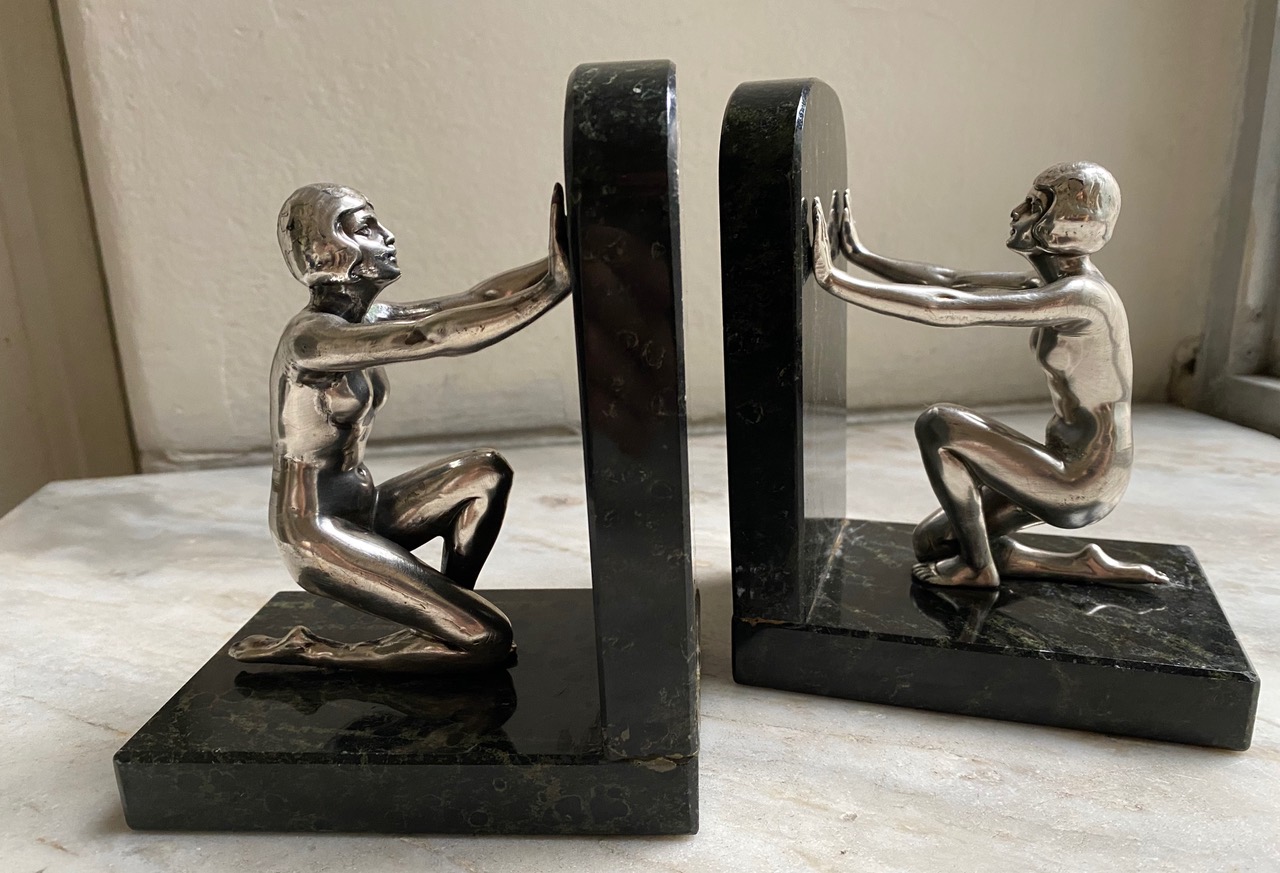

Indeed, while competing with carefully curated first editions or rows of colorful spines is no small task, plenty of bookends steal the stage.

Furniture makers have ensured that bookends demand as much attention as the books themselves. The primary function of bookends is to ensure that your books remain upright in your bookcase, but style and form have taken the lead over the years. The authors of the Oxford English Dictionary report that the term “book end” didn’t appear in printed material until 1907. Serving faithfully in the background, they went unobserved for a while. And the need for these trusty home accents has stood the test of time, which means there are many different kinds to suit any design taste or furniture style.īookends weren’t created until the 1870s.

Finding the Right Bookends for YouĪ good pair of antique, new or vintage bookends will look wonderful in your reading nook. On 1stDibs, browse Art Deco furnishings by designer, including works by Paul Follot and René Lalique, or by category, from angular chairs and sculptural burl wood tables to lighting and decorative objects. Today, the style is still favored by designers looking to infuse interiors with an air of luxury and sophistication.įrom mother-of-pearl inlaid vitrines to chrome aviator chairs, bold and inventive works in the Art Deco style include chaise longues (also known as chaise lounges) and curved armchairs. This is particularly true of American Art Deco, which is also called “ Streamline Moderne” or “Machine Age” design.Īrt Deco textile designers employed dazzling floral motifs and vivid colors, and while Art Deco furniture makers respected the dark woods and modern metals with which they worked, they frequently incorporated decorative embellishments such as exotic animal hides as well as veneers in their seating, case pieces and bedroom furniture. “Art Deco” is often used broadly, to describe the work of creators in associated or ancillary styles. The term Art Deco derives from the name of a large decorative arts exhibition held in Paris in 1925. More than its emphasis on natural wood grains and focus on traditional craftsmanship, Art Deco furniture - which typically refers to pieces produced during the 1920s and 1930s - is an ode to the glamour of the “ Roaring Twenties.” Widely known designers associated with the Art Deco style include Émile-Jacques Ruhlmann, Eileen Gray, Maurice Dufrêne and Jules Leleu. Here are 2 further examples of Revere Scroll Bookends from our book, BOOKENDS: Objects of Art and Fashion.Art Deco furniture is characterized by its celebration of modern life. Scroll Bookend in the David Owsley Museum of Art Collection, Ball State University.Įxpanding Bookend in the Cooper Hewitt, Product Design and Decorative Arts Department, Collection. Check out examples found in museum exhibits by clicking on the following links. These spring-loaded, rolled steel, scroll bookends are iconic examples of a period of Art Deco design in American manufacturing. In recent forays to modernism and antique venues The Bookend Collector has noticed an up-tick in the number of Art Deco Scroll Bookends for sale.

They belong in any room with Art Deco decor and in any collection of Art Deco bookends. Farr for the Revere Copper and Brass Company illustrate high-style American Art Deco from 1935 by their geometric appearance, bright paint, and shining metal. These Double Scroll Bookends designed by Fred D. 1935.Īrt Deco, Clean, Modern, Geometric are all styles trending in home decor. Height 5 inches, Foundry: Revere Copper and Brass Co. Double Scroll Bookends: Painted wood and steel.


 0 kommentar(er)
0 kommentar(er)
